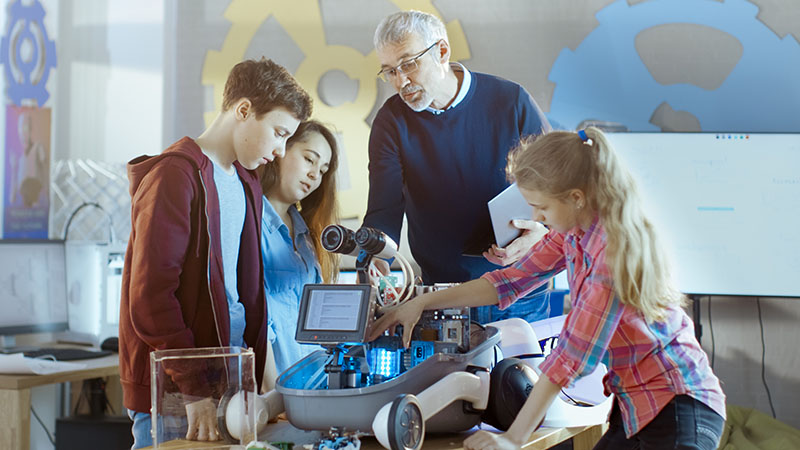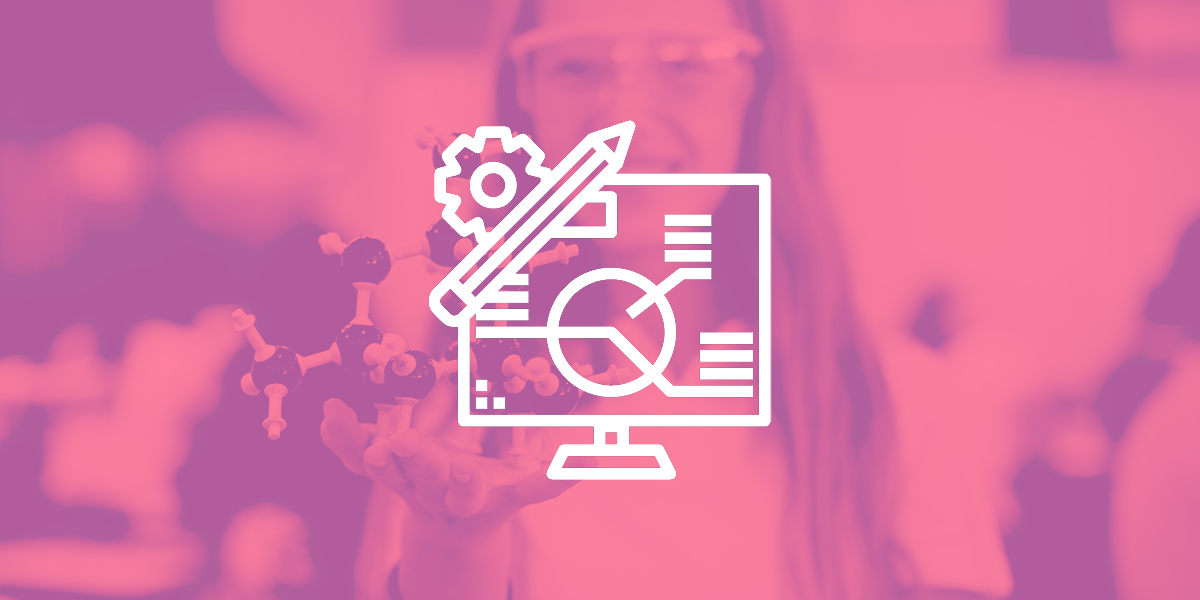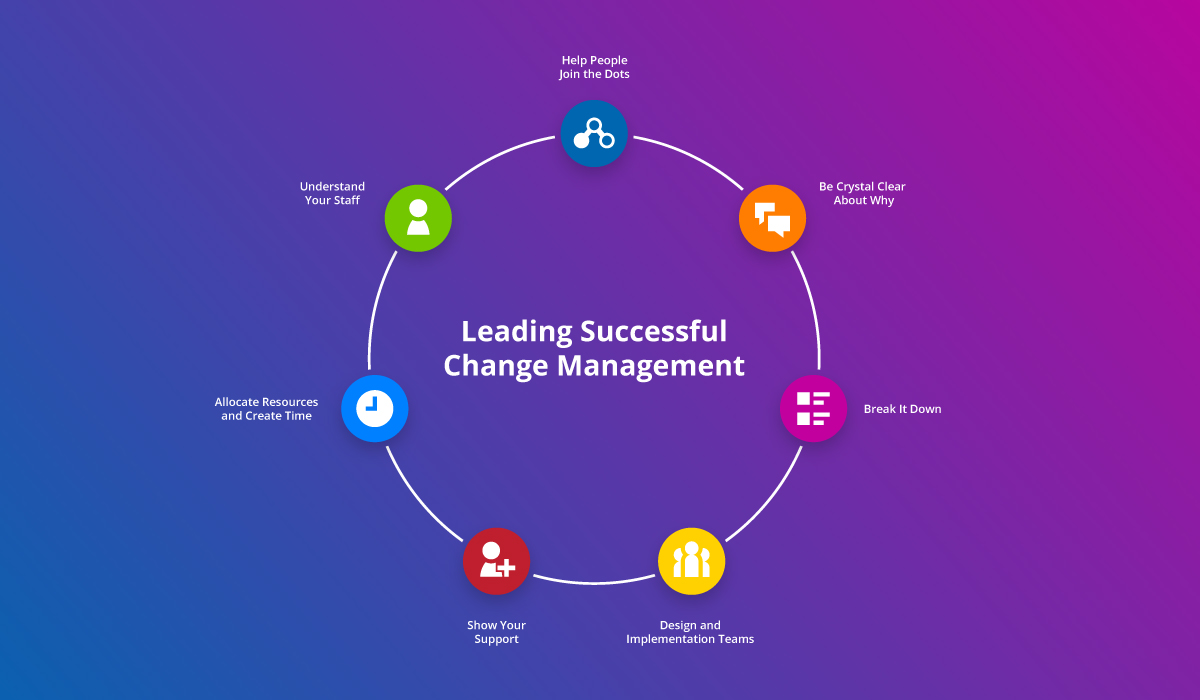As an educator, it can be challenging to meet the individual needs of students with different learning abilities. But the fact of the matter is, not all students learn at the same pace or in the same way. A degree of customisation, that is, individualisation is required to provide a holistic learning experience for every student. Adopting an individualised learning approach has many benefits and, most importantly, prepares young people for a lifelong love of learning.

What is Individualised Learning?
Individualised learning, much like its close relative personalised learning, asks teachers to adjust their practice to create a learner-centred classroom.
This involves individualising three elements of the learning process based on the abilities and interests of the student:
- Content
- Learning technology
- Pace of learning
Like all great journeys, on an individualised learning journey, every student moves at their own pace, on their own path. It’s then up to the teacher to act as the guide to ensure everyone ends up at the same destination. The pace and the path of each student lets you know when to introduce resources, activities, and indeed assessments, at just the right time, in just the right way.
Key Elements of Individualised Learning

Let’s now take a look at the teaching methods and learning strategies that are important to facilitate individualised learning—the nine elements of individualised learning.
1. Research of effective teaching techniques
Before introducing any form of individualised learning to your school or classroom, it is important to understand the effective techniques that are available to succeed with individualised learning. Of particular interest are studies that show which techniques have been successful as well as the method applied by teachers.
Using reputable sources to learn how other teachers have succeeded, or even see what the pitfalls along the way have been, is essential to implementing any changes in your practice. For instance, to find out more about successful innovations in individualised learning, you may find the following article from the Australian Council for Education Research useful.
2. Relevant student data
To succeed at introducing individualised learning into your classroom, you need to also begin with a firm knowledge of your available student data. This data enables you to understand the abilities of your student and their strengths and opportunities.
In implementing any form of learning instruction, the key is to be able to analyse the progress of your students. Only if you have the data will you be able to determine the effect of your new practices. If you haven’t already, you need to chat to your ed-tech provider to determine the availability of student data to support individualised learning at your school.
3. Knowledge of the curriculum
Knowledge of your curriculum requirements is important to implementing a successful individualised learning program. Remember, with individualised learning, the end goal is the same, it’s the journey that is different. So, this practice requires a careful understanding of the curriculum requirements to ensure your students are on the right journey.
4. Learning delivered at a timely pace
It wouldn’t be individualised if the learning wasn’t delivered at the pace of the learner.
Students don’t all learn at the same pace and also, students don’t all grasp learning material as quickly as one another. Their prior knowledge of certain topics may also vary. It is therefore important to ensure that the delivery of learning is done at the pace of the student, so when they’re ready, you can provide the next learning opportunity.
5. Mapping student progress
It’s important to have a framework that allows you to measure student progress towards the learning goal you’ve set for them. Knowing how learners progress in their understanding of concepts is important so that you can map the next stage of the journey.
Think about the structure of observed learning outcomes (also known as SOLO) taxonomy from John Briggs—using that model, teachers map a path to support learners as they move from unistructural, to multistructural, to relational, and finally into extended abstract understanding of a new concept.
For instance, a student may demonstrate that they have recently moved from a simple recall of individual facts about the current topic of study into being able to combine two or more of them to come up with a new idea. Now you know that they’ve moved from multistructural to relational understanding. This means the next step on their journey is to encourage hypothesising to create a brand new concept—extended abstract.
6. Goals are identified by the student
For success with individualised learning, the goals must be identified by the student. Only then will the student be invested in their learning. The concept of individualised learning requires the student to foster willingness in the task or learning material as this fuels motivation and efficiency.
By setting their own goals, students become more active participants in their learning journey, are able to identify the elements required for their own learning and complete the tasks without unnecessary delays.
7. Available tools can be tailored to individual needs
Successful practitioners of individualised learning know how to get creative with the learning tools available and tailor them to individual student needs. In this modern learning environment, we have more access than ever to technology that can be harnessed for this purpose. It is therefore important that use of online learning platforms provides opportunities to individualise learning by enabling ease of assessment differentiation and customising content for those students who may require extra guidance.
Features like custom participation can also enable you to create and manage individual learning plans for many students at the same time—for instance, you could vary activity descriptions or create deeper tasks for those students who need it.
8. Continuous conversational feedback
Nothing is set in stone; students will progress, you may discover additional opportunities, or identify new strengths the student did not previously showcase. So, it is important to ensure continuous feedback with your student is provided and the feedback is conversational, that is, a discussion between teacher and student.
This conversational feedback must also be timely and relevant. Only then will your student be able to harness their own learning goals and invest in further learning.
9. Engage and collaborate within the Learning Community
Last but not least, individualised learning should sit within a learning community—because that’s how people learn best. Engaging and collaborating with the learning community provides opportunities for the learner to share their knowledge and learn from others.

There is a lot to be said about the value of individualised learning. Of utmost importance is ensuring the implementation of this learning approach incorporates careful consideration of all the elements required to be successful. Only then will students be provided an effective student centred learning environment that inspires a lifelong love of learning.
Ren Downing is an English and History teacher with a passion for creating integrated, holistic learning opportunities that are accessible to all. Education theory and eLearning tools are his speciality and education research is his pastime.
If you want to read more about learner-centred approaches, check out our other resources:





